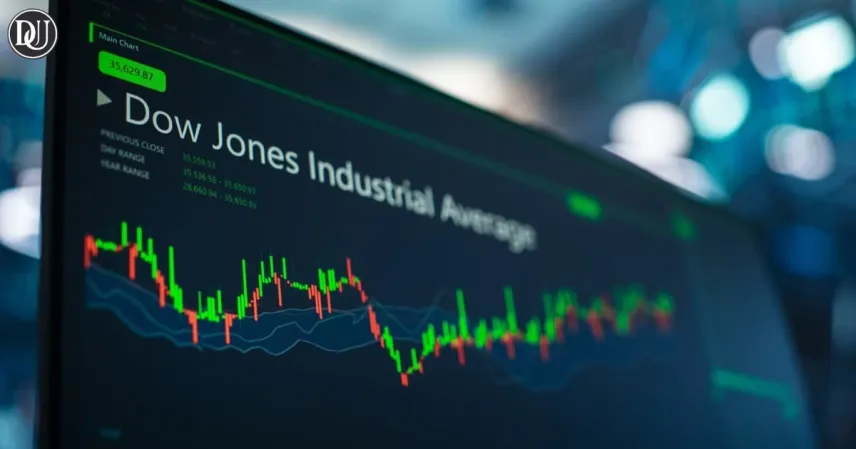The Dow Jones Industrial Average shot up almost 580 points yesterday, you know? That’s like its best day since May, according to what I saw on Yahoo Finance. Honestly, after that whole sell-off we just went through, seeing the market bounce back like that felt… well, pretty good, didn't it? It just kinda highlights how wild these swings can be, especially when everyone’s feeling a bit on edge about, like, interest rates or whatever the flavor of the month is.
📈 The Big Rebound: What Drove It?
Markets had been a bit rough lately, right? Investopedia pointed out this was a pretty sharp rebound from a recent sell-off. It wasn’t just the Dow, either; the S&P 500 and Nasdaq also had their best day in months. What I’m really curious about is what actually triggers these massive moves. It feels like sometimes it's just a collective sigh of relief, but other times there's a real catalyst. This time around, a big part of it seemed to be a cooling inflation report – which, you know, makes people think the Federal Reserve might not hike rates as aggressively. Lower rates tend to be good for stocks, generally speaking. It's like the market exhales.
🧐 What Even *Is* the Dow, Really?
For something we hear about constantly, it’s funny how many people don’t really get what the Dow actually is. It’s basically an index of 30 really big, well-established American companies – like Apple, Microsoft, Johnson & Johnson, Disney, and so on. It’s price-weighted, which means companies with higher stock prices have a bigger impact on the index’s value, even if they’re not the biggest companies by market cap. A lot of people sometimes forget that. It’s not like the S&P 500, which covers 500 companies and is market-cap weighted, giving a broader view. The Dow is more... the blue-chip barometer, if that makes sense. It’s the old guard.
🚀 Tech's Role in the Rally
One thing that consistently stands out when the market has a good run is how much tech contributes. Investopedia specifically mentioned Nvidia and AMD leading a rally in the chip sector. That makes a lot of sense, doesn’t it? These semiconductor companies are pretty much the backbone of so much innovation right now – AI, cloud computing, advanced electronics. If they're doing well, it suggests a broader optimism about future growth. I mean, look at Nvidia's performance over the last year. It’s just wild. When those kinds of bellwether tech stocks move, they tend to pull a lot of the market with them, especially the Nasdaq, but certainly the Dow components that are tech giants.
💡 Beyond the Big Three: Broader Market Moves
While everyone focuses on the Dow, S&P, and Nasdaq – and for good reason, they're the big ones – it’s always interesting to see if the gains are broad-based or if it's just a few big names carrying the load. CNBC’s news on August 4, 2025, confirmed stocks closed sharply higher, showing a pretty decent rebound. You want to see broad participation in a rally to really believe it has legs, I think. If only a handful of companies are pushing the index up, it can feel a bit shaky. But a day like yesterday, with significant jumps across the board, suggests a more generalized shift in sentiment. It's not just a sector play, it's more like a market-wide mood swing in a positive direction.
🤔 Why Do We Care So Much About It?
It’s just a number, right? But honestly, the Dow has become this kind of shorthand for the health of the economy, or at least the corporate part of it. When the Dow is up, people feel better about their investments, about their 401ks, about the future. It’s psychological, but it’s also very real in its impact on consumer confidence. I mean, if the biggest companies in the US are doing well, that usually trickles down to jobs, spending… eventually. Could be wrong, but I’ve always seen it as a leading indicator of general sentiment, even if it’s an imperfect measure of the entire economy. It’s like checking the pulse of American business, you know?
🔮 Looking Ahead: Any Guesses?
Predicting the market is a fool's errand, obviously, but you can’t help but wonder if this rebound is just a temporary bounce or if it signals a more sustained upward trend. A lot depends on those inflation numbers holding steady, and whether the Fed truly pauses its rate hikes. We've seen these “dead cat bounces” before, where things look good for a day or two and then fall back. But a 580-point jump, especially after a sell-off, does feel a bit more significant. It certainly gives investors some breathing room. Maybe it’s the start of a late-year rally, who knows? It’s always a rollercoaster, that’s for sure. But for now, seeing green is a nice change of pace. Anyway, just something that popped into my head at 2 AM, thought you'd find it interesting.










